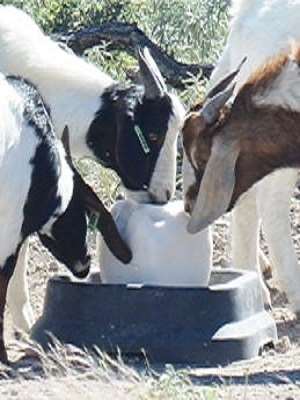By Steve Byrns
A six-year Texas A&M AgriLife study proved what many West Texas stockmen know; properly managed meat goats are valuable property, no matter how many you have.
Bill Thompson, Texas A&M AgriLife Extension Service economist, and Dr. Dan Waldron, Texas A&M Agrilife Research geneticist, both at San Angelo, and Dr. Rob Hogan, AgriLife Extension economist at Uvalde, recently finished a formal price analysis of the meat goat kid market in San Angelo, home of Producers Livestock Auction.
“Producers Livestock Auction is the largest sheep and goat market in the nation, so it has some price bearing on other sheep and goat markets across the country,” Thompson said. “The auction staff has been cooperating with us by making their sales data available, which has given us an opportunity to extract some interesting findings.”
In general, the men looked at meat goat kid prices from 2010-2015.
“What we saw over that period of time were increasing price levels, but declining goat numbers here and across the U.S.,” Thompson said. “So we’ve got an increase in demand primarily from our growing ethnic populations, but a decreasing supply.
“We’re seeing a big increase in hair sheep numbers, and I think some of that drop in goat numbers is due to people switching to hair sheep.”
Waldron said the very nature of the goat, predominantly a seasonal breeder, can have a strong bearing on price.

“We do see an expected seasonal goat price drop in the summer,” Waldron said. “Basically, we see lows between July and September and that’s also when we see our greatest volume of goats sold. So we see simple supply-and-demand economics at play there.
“Our area producers typically avoid kidding in June through September simply because the hot temperatures affect the forage quality, which affects milk production and subsequent growth of the kids. That obviously affects when the kids will reach market weight.”
Waldron said the highest prices usually occur between December and March due to the smaller numbers available at that time.
Thompson said another interesting point was that as in most livestock species, the price per pound drops as the animal’s weight increases. With meat goat kids, the price actually increases – up to about 60 pounds. So if range conditions allow, producers can increase their gross revenue by keeping the animal on the range until they reach 60 pounds.
“But once they pass 60 pounds, the price per pound starts to drop,” Thompson said. “It appears 60 pounds is the preferred market weight of these animals
“And finally, we didn’t see much of a premium for goats sold in lot sizes above six to 12 goats. For wool sheep and cattle, we typically see a greater price paid for animals sold in larger, uniform lots.”
Thompson said that point alone may make the meat goat business more appealing for producers who can only keep a few animals.
“There is always a need for maintaining uniform quality animals, but it’s probably not going to affect the price received as much as other classes of livestock.”
Click here to see more...